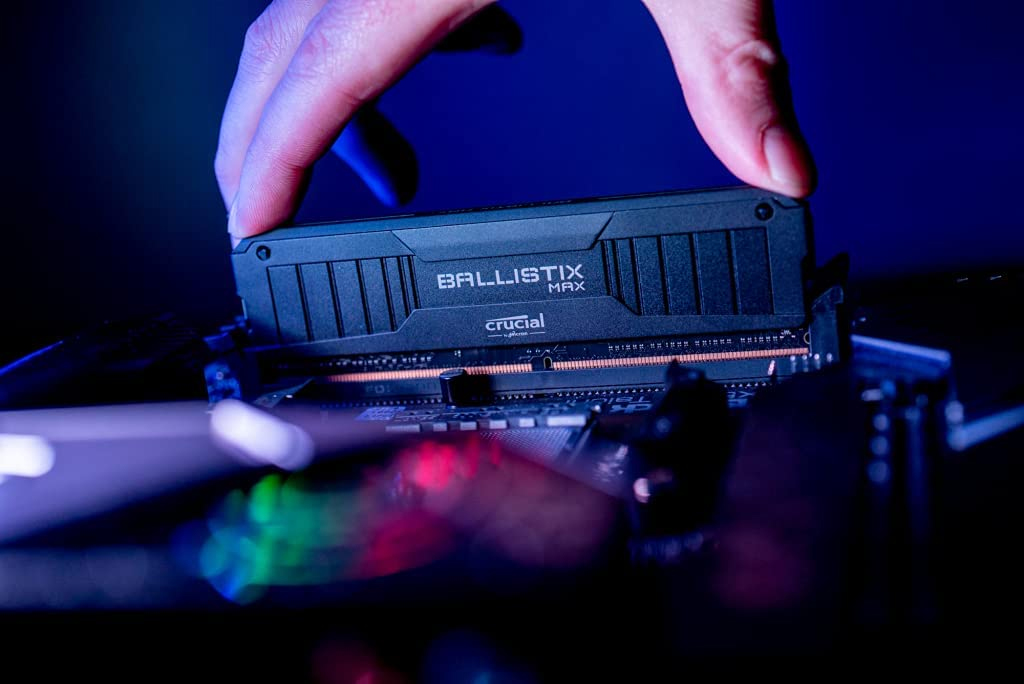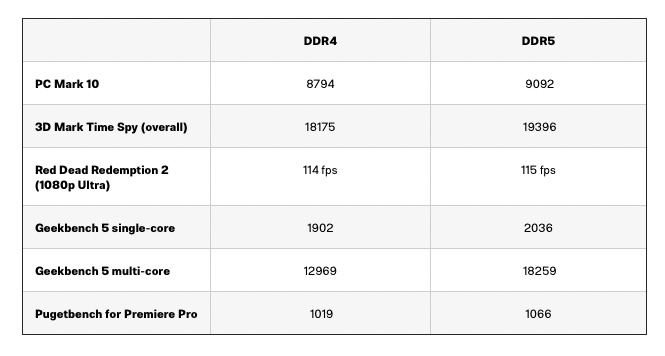DDR5 vs. DDR4 RAM: Is DDR5 worth it?
DDR5 is the new standard of RAM and is found on the latest computers. But which is better, DDR5 or DDR4?

DDR4 memory has been the main type of RAM used in several generations of PCs and laptops for years now, but its successor is quickly taking over. DDR5 memory made its debut on Intel’s Alder Lake processors and will be found in the AMD Ryzen 7000-series processors, but that begs the question: Is DDR5 worth the upgrade?
Here’s how DDR5 and DDR4 match up so you can make the best decision about which type of memory is right for your next upgrade.

Pricing and availability
DDR5 RAM pricing has come down quite a bit since its introduction in 2021. Then, you were looking at over $1,000 for 16GB. Today, most sell for around $6 per gigabyte, which means you can grab 16GB of DDR5 RAM for less than $130. That’s a massive price cut.
If you want greater speed and better timings when stacked against the best DDR4 RAM, you’ll have to pay more, though. For example, a decent 16GB kit in the 5600MHz range will run you around $180. But if you go up to 32GB of dual-channel DDR5 RAM at 5600MHz, you’re looking at spending nearly $300. This is affordable for top-of-the-line memory.
DDR5 is already standard with Intel’s ‘Alder Lake’ 12th-generation processors, and we can now confirm AMD’s upcoming Ryzen 7000 Zen 4 CPU will exclusively use DDR5 RAM. The company’s technical marketing director, Robert Hallock, said the company is “all-in on DDR5.”
Getting your hands on DDR5 RAM for your own custom build is now as easy as finding DDR4. You can check Best Buy, Amazon, NewEgg, or your favorite electronics retailer, and they’ll most likely have plenty to choose from.
Our hands-on tests
We tested both DDR4 and DDR5 on Intel’s 12th-gen i9-12900K in May, and our tests found DDR5 was an average of 11% faster across different testing benchmarks.

The results depended largely on the benchmarking software used. As you can see, DDR5 performed only 7% faster than DDR4 in a 3D Mark Time Spy test, but blew DDR4 out of the water in both Geekbench 5 tests.
It’s important to note that DDR5 give Alder Lake an advantage, which means Intel’s 12th-gen chips work best when coupled with DDR5 RAM. Once we get our hands on the new AMD Ryzen 7000 processors, we’ll be able to see how the impact DDR5 has on that one. We’re confident the results will be similar, if not even better on multi-core performance.
Performance
Memory performance is dependent on a number of factors, but the biggest differentiator between different kits is speed.
This is measured in Megatransfers per second, or MT/s, although it’s often given as a MHz rating. In either case, the effective performance number is the same, so it can be used interchangeably.
DDR4 has a range of standards starting at 1,600MHz and maxing out at 3,200MHz. However, manufactures have been releasing DDDR4 memory kits that are far more capable than that, and through the use of extreme memory profile (XMP) automated overclocking, they have been enabling far greater speeds as well. Kits rated for 4,000MHz are not uncommon, although there have been record-setting kits in excess of 5,000MHz. The real-world performance gains with such memory aren’t immediately obvious, so these sorts of kits are uncommon (and expensive), but they do exist.
 Crucial’s Ballistix Max range offers some of the highest DDR4 memory speeds. Crucial
Crucial’s Ballistix Max range offers some of the highest DDR4 memory speeds. CrucialDDR5, on the other hand, has its own range of standards, starting at 4,800MHz and running up to 6,400MHz. As with DDR4, though, there will be faster memory available in the future, and manufacturers have already begun announcing kits far in excess of the DDR5 standards. Adata unveiled a line of memory that would be capable of hitting speeds of 8,400MHz, and another that may be able to reach 12,600MHz.
DDR5’s raw speed far surpasses that of even the fastest DDR4 at the top end, while the midrange hovers around the 5,000MHz mark, which is like the top end of DDR4 RAM.
Timings will be the other side of the performance coin. They control the latency of certain memory functions and can have quite a dramatic effect on real-world performance of memory. Although they are almost always looser on higher-frequency memory, and will be on DDR5, it is unlikely that they will cause DDR5 to perform worse than DDR4.
DDR5 also improves the channel architecture of the memory, using two smaller channels, rather than a single larger one, to handle memory access. The width of the channel remains the same, but two smaller channels may improve efficiency, which could help give DDR5 another performance edge over its last-generation rivals.
Capacity
One of the major changes with DDR5 at the architectural level is that the dies are twice as dense compared to DDR4. When combined with new chip designs, that means that where DDR4 memory chips could be manufactured at up to 16GB, DDR5 chips can be made with capacities up to 64GB. That should lead to larger-capacity memory sticks. While 128GB of memory in a single stick seems a likely option, Samsung has a whopping 512GB DDR5 stick.
There are very few mainstream applications for such memory capacities, but if the option is there for greater stick capacities, it makes longer-term upgrades a little easier to plan out and opens up the possibility of greater memory capacities on smaller systems like Mini-ITX builds.
Want to know how much RAM you need? Check out our guide.
Power and thermals
As has been the case with every generation of DDR memory that came before, DDR5 demands less power for its improved performance. Where DDR4 has a standard voltage demand of 1.2v, DDR5 sips just 1.1v. This plays a part in reducing power consumption in mobile devices like laptops and tablets.
Typically, a lower voltage would suggest the electronics would run cooler, but that is not the case with DDR5. DDR5 kits have the voltage regulator for the memory on the modules themselves, rather than on the motherboard.
That, combined with the improved performance and much greater density of the memory chips, means DDR5 runs hotter than DDR4. This means you’ll want to make sure you have compatible heat sinks before installing DDR5 RAM.
DDR5 is better, but at what cost?
DDR5’s performance reaches more than double the fastest DDR4 modules. Coupled with Intel 12th-gen and upcoming 13th-gen processors or the new AMD Ryzen 7000-series processors, PCs are faster and more powerful than ever before. The recent crash in chip prices is an added bonus.
DDR5 has some issues with heat performance, but it’s not anything a well-cooled machine can’t handle. DDR4 is a familiar standard found in most computers built since 2015, and the top end will serve you well. However, if you want to future-proof your computer, you should upgrade to DDR5. This is the new standard, and DDR4 is quickly becoming obsolete.

 BigThink
BigThink 


























![Are You Still Optimizing for Rankings? AI Search May Not Care. [Webinar] via @sejournal, @hethr_campbell](https://www.searchenginejournal.com/wp-content/uploads/2025/06/1-1-307.png)




